Renault Austral vs BMW X1 – Differences & prices compared
Compare performance, boot space, consumption and price in one view.
Find out now: which car is the better choice for you – Renault Austral or BMW X1?
The Renault Austral (SUV) comes with a Petrol MHEV or Full Hybrid engine and Automatic transmission. In comparison, the BMW X1 (SUV) features a Diesel MHEV, Petrol MHEV, Plugin Hybrid, Petrol or Diesel engine with Automatic transmission.
When it comes to boot capacity, the Renault Austral offers 555 L, while the BMW X1 provides 540 L – depending on how much space you need. If you’re looking for more power, decide whether the 200 HP of the Renault Austral or the 326 HP of the BMW X1 suits your needs better.
In terms of consumption, the values are 4.80 L per 100 km for the Renault Austral, and 0.80 L for the BMW X1.
Price-wise, the Renault Austral starts at 29700 £, while the BMW X1 is available from 38200 £. Compare all the details and find out which model fits your lifestyle best!
In this head-to-head comparison, the BMW X1 showcases its premium pedigree with a refined interior and sharp handling, appealing to those who seek a luxurious driving experience. On the other hand, the Renault Austral offers a more value-oriented package, boasting practicality and a spacious cabin ideal for family outings. While the X1 excels in performance and brand prestige, the Austral positions itself as a versatile and budget-friendly alternative in the compact SUV segment.
Renault Austral
The Renault Austral is a compact SUV that combines modern design with advanced technology, making it a standout in the crowded automotive market. Its sleek exterior styling is paired with a comfortable and spacious interior, providing a premium feel for passengers. With an emphasis on connectivity and innovation, the Austral ensures that drivers stay engaged and informed on every journey.
details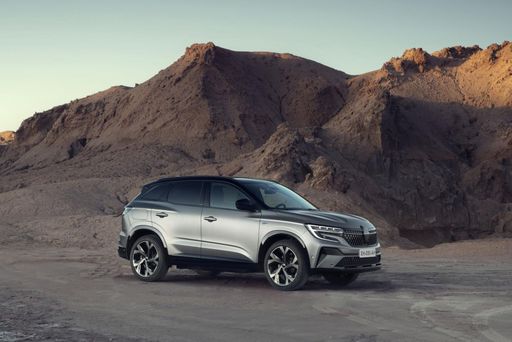 @ Renault
@ Renault
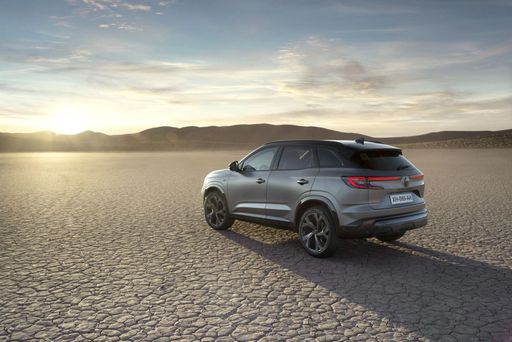 @ Renault
@ Renault
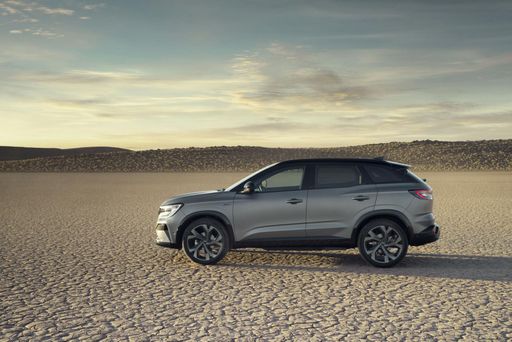 @ Renault
@ Renault
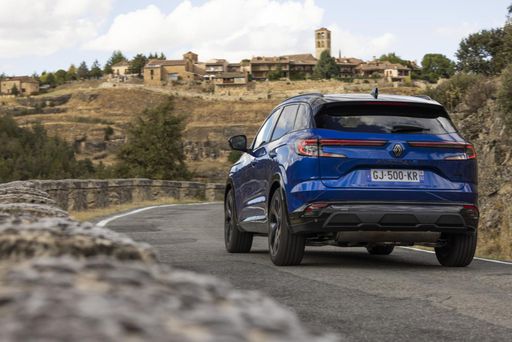 @ Renault
@ Renault
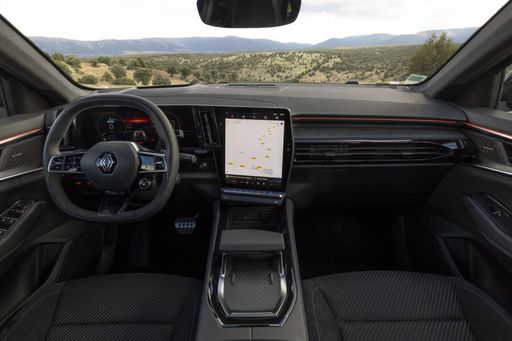 @ Renault
@ Renault
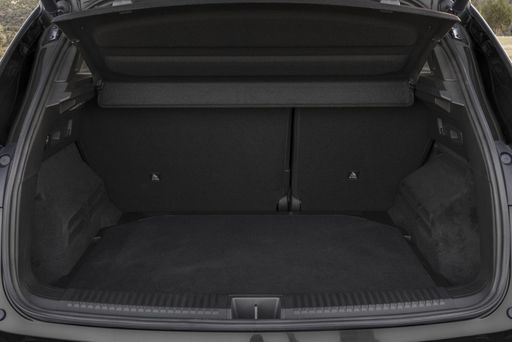 @ Renault
@ Renault
BMW X1
The new BMW X1 effortlessly blends sporty elegance with practical functionality, making it a standout choice in the compact SUV segment. Inside, the sophisticated cabin design is complemented by high-quality materials and cutting-edge technology, creating a welcoming and advanced driving environment. On the road, the vehicle's agile handling and responsive performance promise an engaging driving experience, whether navigating urban streets or embarking on longer journeys.
details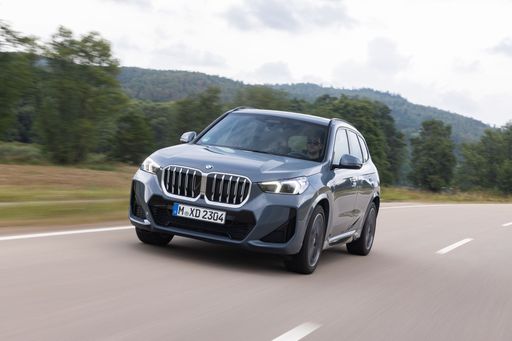 @ press.bmwgroup.com
@ press.bmwgroup.com
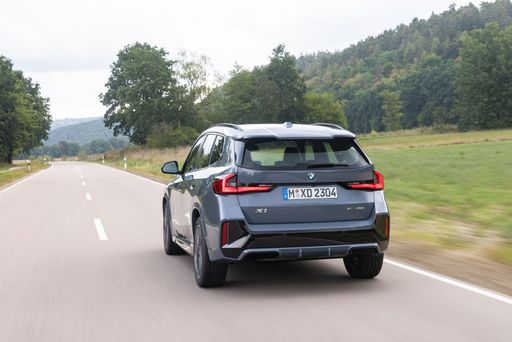 @ press.bmwgroup.com
@ press.bmwgroup.com
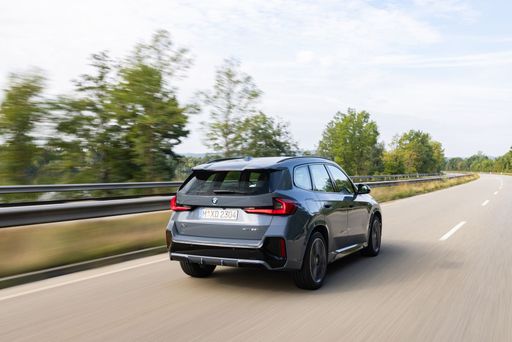 @ press.bmwgroup.com
@ press.bmwgroup.com
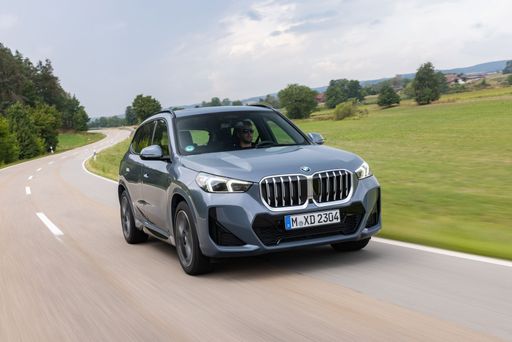 @ press.bmwgroup.com
@ press.bmwgroup.com
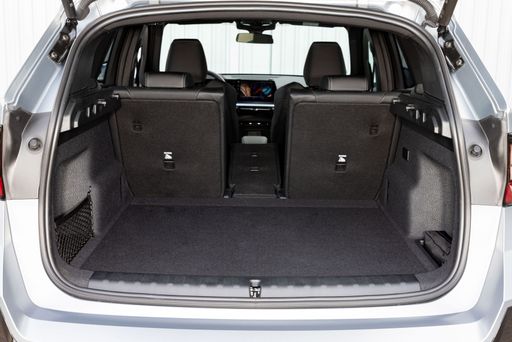 @ press.bmwgroup.com
@ press.bmwgroup.com
BMW X1 vs Renault Austral: A Comprehensive Comparison of Two Innovative SUVs
The automotive market is increasingly competitive, especially in the SUV segment, where manufacturers are racing to deliver vehicles that blend performance, technology, and practicality. Two prominent contenders in this arena are the BMW X1 and the Renault Austral. Each car showcases unique traits and innovations, catering to distinct consumer needs. In this article, we will delve into the technical specifications, design aspects, and innovative features of both SUVs to help potential buyers make an informed decision.
Engine and Performance: Power Meets Efficiency
The BMW X1 comes with a wide range of engine options, including diesel, petrol, and hybrid variants, offering flexibility depending on the buyer's preference. With power outputs ranging from 136 HP in the entry-level model to a robust 326 HP in the top-tier version, the X1 provides a thrilling driving experience. The acceleration capabilities are equally impressive, with some models achieving 0-100 km/h in as little as 5.4 seconds.
On the other hand, the Renault Austral, while not as powerful as the X1, offers practical performance with petrol MHEV and full hybrid engines. The maximum output of the Austral reaches 200 HP, allowing for a 0-100 km/h time of 8.4 seconds, which is quite respectable within this segment. It’s worth noting that the X1's diverse engine configuration not only provides more power but also potential for better fuel efficiency, with some models consuming as low as 4.6 L/100km.
Transmission and Drive Systems
The BMW X1 features advanced transmission systems, including dual-clutch automatic options and all-wheel-drive configurations, enhancing its driving dynamics. The availability of front-wheel drive and all-wheel drive means buyers can select a version that best fits their driving style and environmental conditions.
Conversely, the Renault Austral is equipped with a continuously variable transmission (CVT) and is strictly front-wheel drive. While CVTs are known for their smooth operation and fuel efficiency, the absence of an all-wheel-drive option may be a downside for those requiring enhanced traction.
Dimensions and Practicality: Comfort and Space
In terms of dimensions, the BMW X1 measures 4500 mm in length and 1845 mm in width, providing a spacious cabin and a trunk capacity that ranges from 490 to 540 liters depending on the variant. Its weight falls between 1650 and 1935 kg, making it a robust yet manageable SUV.
The Renault Austral, slightly longer at 4510 mm and wider at 1825 mm, offers good interior space but has a lesser trunk capacity of 430 to 500 liters. With a curb weight of 1539 to 1592 kg, it strikes a balance between practicality and efficiency for urban drives and family outings.
Innovative Features: Infotainment and Safety
The BMW X1 is equipped with the latest technological advancements, including a high-resolution infotainment system that supports Apple CarPlay and Android Auto, as well as advanced driver assistance systems enhancing safety. Features like adaptive cruise control, lane-keeping assist, and automated emergency braking make it a secure choice on the road.
The Renault Austral doesn't lag in the technological department either. It incorporates an intuitive infotainment system, focusing on user-friendliness and connectivity. Enhanced safety features, such as automatic emergency braking and lane departure alerts, ensure a secure driving experience within the SUV's compact form.
Environmental Impact: Efficiency Ratings
Fuel efficiency and environmental impact are significant considerations for modern car buyers. The BMW X1 offers a variety of CO2 emissions, ranging from 120 to 175 g/km depending on the engine variant. Its hybrid models also contribute to lower emissions, helping to minimize the overall environmental footprint.
In comparison, the Renault Austral boasts a commendable CO2 efficiency, particularly with its hybrid models emitting as low as 105 g/km. This highlights Renault’s commitment to building more eco-friendly vehicles, appealing to environmentally-conscious consumers.
Conclusion: Choosing the Right SUV for You
Both the BMW X1 and the Renault Austral present strong cases in the highly competitive SUV market. The X1 stands out with its powerful engine options, advanced driving dynamics, and high-tech features, catering more to performance enthusiasts and luxury seekers. On the other hand, the Austral offers an appealing package for those looking for efficiency, practicality, and innovative hybrid technology.
Ultimately, the choice between these two SUVs will depend on individual preferences regarding performance, technology, and environmental impact. Prospective buyers should consider their driving habits, budget, and lifestyle when making their decision.

|

|
|
|
|
Costs and Consumption |
|
|---|---|
|
Price
29700 - 37800 £
|
Price
38200 - 55500 £
|
|
Consumption L/100km
4.8 - 6.5 L
|
Consumption L/100km
0.8 - 7.7 L
|
|
Consumption kWh/100km
-
|
Consumption kWh/100km
-
|
|
Electric Range
-
|
Electric Range
81 km
|
|
Battery Capacity
-
|
Battery Capacity
14.20 kWh
|
|
co2
109 - 148 g/km
|
co2
18 - 175 g/km
|
|
Fuel tank capacity
55 L
|
Fuel tank capacity
47 - 54 L
|
Dimensions and Body |
|
|---|---|
|
Body Type
SUV
|
Body Type
SUV
|
|
Seats
5
|
Seats
5
|
|
Doors
5
|
Doors
5
|
|
Curb weight
1539 - 1613 kg
|
Curb weight
1575 - 1935 kg
|
|
Trunk capacity
527 - 555 L
|
Trunk capacity
490 - 540 L
|
|
Length
4533 mm
|
Length
4500 - 4505 mm
|
|
Width
1825 mm
|
Width
1845 mm
|
|
Height
1645 mm
|
Height
1622 - 1642 mm
|
|
Payload
464 - 477 kg
|
Payload
490 - 500 kg
|
Engine and Performance |
|
|---|---|
|
Engine Type
Petrol MHEV, Full Hybrid
|
Engine Type
Diesel MHEV, Petrol MHEV, Plugin Hybrid, Petrol, Diesel
|
|
Transmission
Automatic
|
Transmission
Automatic
|
|
Transmission Detail
Automatic Gearbox
|
Transmission Detail
Dual-Clutch Automatic
|
|
Drive Type
Front-Wheel Drive
|
Drive Type
Front-Wheel Drive, All-Wheel Drive
|
|
Power HP
158 - 200 HP
|
Power HP
136 - 326 HP
|
|
Acceleration 0-100km/h
8.4 - 9.7 s
|
Acceleration 0-100km/h
5.4 - 9.2 s
|
|
Max Speed
180 km/h
|
Max Speed
190 - 250 km/h
|
|
Torque
270 Nm
|
Torque
230 - 477 Nm
|
|
Number of Cylinders
3 - 4
|
Number of Cylinders
3 - 4
|
|
Power kW
116 - 147 kW
|
Power kW
100 - 240 kW
|
|
Engine capacity
1199 - 1332 cm3
|
Engine capacity
1499 - 1998 cm3
|
General |
|
|---|---|
|
Model Year
2025
|
Model Year
2023 - 2025
|
|
CO2 Efficiency Class
E, C
|
CO2 Efficiency Class
D, E, B, F
|
|
Brand
Renault
|
Brand
BMW
|
Renault Austral
Introducing the Renault Austral: A New Era of Performance and Efficiency
Renault has once again set the bar high with the introduction of the Renault Austral. Blending cutting-edge technology with consistent design craftsmanship, the Austral is the perfect SUV for those who seek style and substance on the road. With a range of models available, the Austral caters not just to different preferences but showcases Renault’s commitment to innovation and sustainability.
Innovative Powertrains Tailored for Performance
The Renault Austral is available in two major powertrain options: the Mild Hybrid and the E-Tech Full Hybrid. Both options are designed to deliver efficient performance while minimizing the environmental footprint.
The Mild Hybrid variant, boasting 158 horsepower, integrates a 1.3-liter 4-cylinder petrol engine. It ensures smooth transitions with its front-wheel drive and automatic transmission. The Renault Austral Mild Hybrid achieves approximately 6.1 L/100 km, emphasizing an eco-friendly approach with its CO2 efficiency class E.
On the other hand, the E-Tech Full Hybrid version takes performance up a notch with 200 horsepower and a 1.2-liter 3-cylinder engine. This variant promises an astonishing fuel consumption of 4.7 L/100 km, accompanied by a class-leading CO2 efficiency (class C). The full hybrid system not only optimizes energy use but also provides a dynamic and spirited drive.
Technological Advancements and Features
Renault's focus on technology shines remarkably in the Austral. The automatic gearbox ensures seamless power delivery, allowing drivers to enjoy stress-free and smooth rides. With a top speed of 174 km/h, the Austral maintains agility and responsiveness during any journey.
Equipped with a robust torque of 270 Nm, Renault Austral provides sufficient pulling power, especially beneficial on tricky terrains or for carrying heavier loads. The Austral can accelerate from 0 to 100 km/h in approximately 9.7 to 8.4 seconds, depending on the variant, making it admirably swift for an SUV.
Striking Design and Spacious Comfort
The Renault Austral stands out with its sleek and dynamic design. Measuring 4,510 mm in length, 1,825 mm in width, and 1,618 mm in height, it's perfectly dimensioned for both city and off-road driving. Offering 5 seats, it ensures ample space and comfort for passengers, making it an ideal choice for family trips or long journeys.
With a trunk capacity of up to 500 liters, practicality is never compromised. Whether it's groceries or luggage for a weekend getaway, the Austral offers plenty of room. Its curb weight ranges between 1,539 to 1,592 kg, optimizing fuel efficiency while maintaining a sturdy build.
Price Points and Trim Levels
The Renault Austral offers a variety of trim levels to suit varying tastes and requirements. Starting at a competitive price of €34,250 and reaching up to €44,950, customers can choose from trims like the Evolution Automatik, Iconic Esprit Alpine Automatik, and Techno Multi-Mode-Automatik. Each trim combines premium features with state-of-the-art technology, ensuring value for money.
Conclusion: Renault's Commitment to the Future
The Renault Austral is not just about moving forward; it represents a journey toward innovation and environmental responsibility. Whether selecting a mildly efficient hybrid or opting for the full hybrid marvel, drivers will appreciate the engineering excellence and thoughtful design that the Austral offers. Renault continues to pave the way for sustainable motoring, and the Austral is yet another milestone in their illustrious automotive legacy.
BMW X1
The New BMW X1: A Fusion of Innovation and Performance
For those in search of a luxury SUV that masterfully combines technical innovation with driving pleasure, the BMW X1 stands as a paragon of design and engineering excellence. As part of the competitive compact SUV segment, the BMW X1 offers a robust array of features targeted towards both the tech-savvy and the driving enthusiast.
Advanced Engine Options
The BMW X1 delivers a versatile range of powertrains to suit the specific needs of different drivers. From the efficient diesel engines to cutting-edge plug-in hybrid variants, there’s a model for every preference. The diesel variants, including mild-hybrids, provide a balance between fuel efficiency and power delivery. Petrol engines, on the other hand, offer spirited performance with a more traditional feel.
Efficiency Meets Performance
The BMW X1's remarkable range of power, from 136 PS to an impressive 326 PS, caters to diverse driving needs. Models fitted with mild-hybrid technology afford drivers reduced fuel consumption and emissions, with the plug-in hybrid leading the field in eco-efficiency with consumption figures as low as 0.8 L/100km and an electric range of up to 83 km.
Technological Innovation
Stepping inside the BMW X1, drivers are greeted with an intuitive cockpit, seamlessly integrating the latest BMW technology. An advanced infotainment system offers connectivity at the touch of a button, while an array of driver assistance systems ensure that safety and convenience are at the forefront.
Design and Comfort
The BMW X1 exudes a powerful presence on the road with its refined SUV aesthetics. Offering substantial interior space, it comfortably accommodates up to five passengers with ample boot capacity ranging from 490 to 540 litres. BMW also offers various trim levels, including the luxurious M Sport package, that enhance both the aesthetic and dynamic appeal.
Dynamic Driving Experience
BMW enthusiasts will appreciate the dynamic handling characteristics synonymous with the brand. Whether it's the front-wheel drive or the xDrive all-wheel system, the BMW X1 delivers responsive handling and a smooth driving experience, making it ideal for both urban and motorway driving scenarios.
Conclusion
The BMW X1 raises the bar for compact SUVs, offering a harmonious blend of innovation, efficiency, and driving pleasure. For those seeking a vehicle that stands out both in terms of aesthetics and technology, the X1 is undoubtedly a worthy contender.
What drive types are available for the Renault Austral?
Available configurations include Front-Wheel Drive.
The prices and data displayed are estimates based on German list prices and may vary by country. This information is not legally binding.
